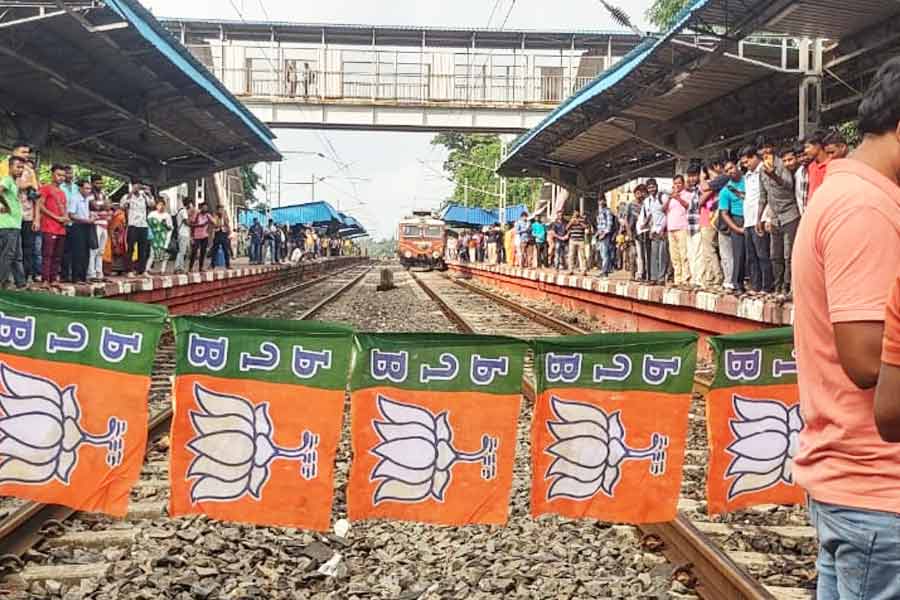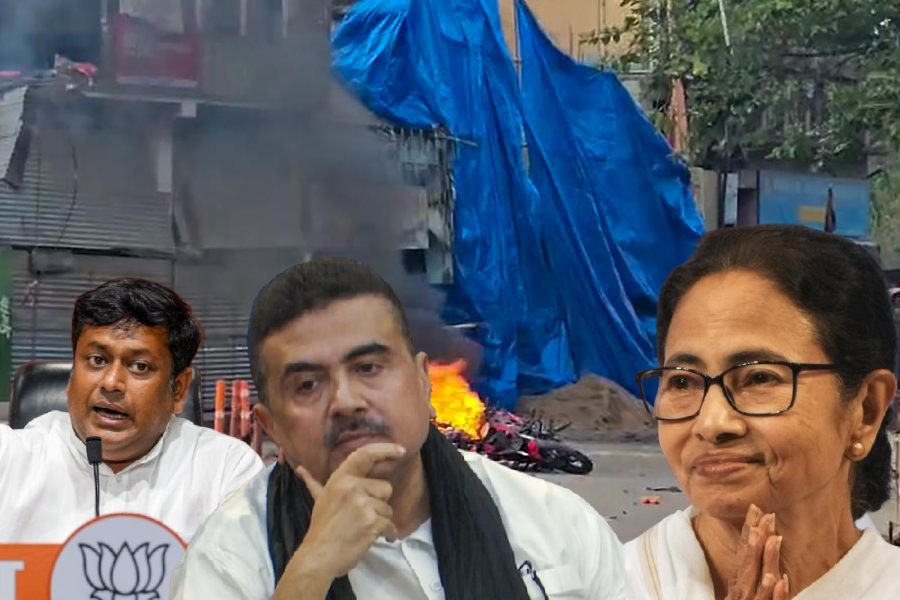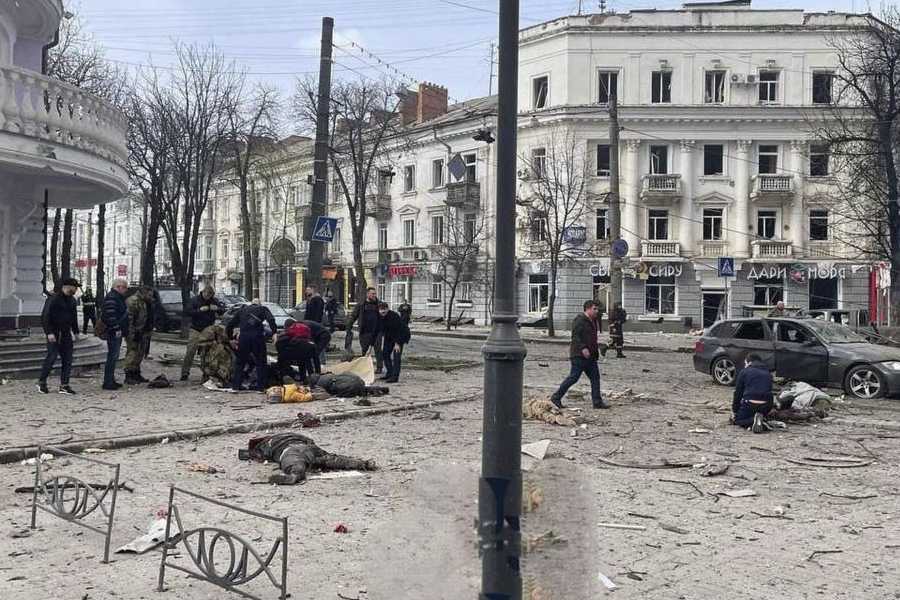
New Town, originally the ground water supply source of hinterland cities including Calcutta Municipal Corporation, has ironically been at risk of turning dry all these years. The city’s biggest — and signature — construction hub was till now almost wholly dependant on pumping out groundwater not only for drinking and day-to-day use but also for construction of the numerous housing estates.
But the proposed 100 MGD (about 450 million litres daily) water treatment plant has finally started working. For about two months now, New Town Kolkata Development Authority (NKDA) has started supplying treated surface water from the new water treatment plant in Tarulia, near Nazrul Tirtha.
At present, New Town has a population of about 65,000 with another 50,000 floating population coming here to work.
With about 135l per day per person being the government of India water requirement norm, New Town needs about 10 million gallons of water per day. The plant is supplying the entire volume by drawing water from the Hooghly via pipelines from the Chitpore lockgate. The pipeline runs along the banks of the Keshtopur Canal, parallel to VIP Road.
Till a few months back, NKDA would use around 30 submersible pumps to draw out water from underground, treat it and send it to overhead tanks. From the tanks, a network of pipelines would transport the water to homes.
Now the water, after getting treated at the New Town plant, is stored in the overhead water tanks for supply to houses.
“A few pockets in New Town still do not receive treated water. They will be covered within a month,” a senior NKDA official said.
Past imperfect
The damage already done to the water table is a cause for worry to the experts. “I was part of two studies on New Town’s ground water in the late 1990s and early 2000 — one by Calcutta Metropolitan Development Authority (CMDA) and the other by Geological Survey of India. Originally the area was the ground water recharging point for the entire region with rainwater seeping into the vast expanses of soil. The groundwater, regularly thus replenished, was used by Calcutta and other nearby areas. But development without proper planning here has led to mindless withdrawal of groundwater affecting not only New Town but also the entire region,” observed Tapas Ghatak, a hydrologist formerly with CMDA. The concretisation of the area, he pointed out, has hampered the natural water recharge and affected the ground water stock.
Arunava Majumdar, an emeritus professor with the water resources department of Jadavpur University, pointed out that setting up of the Bantala leather complex had already led to significant withdrawal of groundwater from the area as the leather industry was extremely water intensive.
“Now that filtered water is being supplied, we must ensure that ground water extraction is stopped,” experts say, echoing a view aired by environment minister and Calcutta mayor Sovan Chatterjee recently on World Environment Day.
Chatterjee has announced that in Calcutta water connection would soon be provided to buildings up to five stories high, even without a completion certificate. This, he said, would reduce dependence on deep tubewells which would be phased out, thus reducing pressure on the water table.
Present tense
In New Town, dotted with towering structures under construction in massively landscaped housing complexes, the water table remains under threat due to rampant withdrawal of water by builders.
The NKDA does offer water connection to buildings during construction. Says an NKDA official: “Builders have to apply to us for water. It takes a month or two to process the application. The water supply department then provides them with a connection that draws water from our supply pipeline using a 10mm ferrule. This is done under the supervision of NKDA officials.”
The NKDA charges Rs 750 per month for water connection from commercial realtors constructing huge residential or commercial complexes in the township. No fees are charged from builders building individual or co-operative housing complexes.
However, several builders admitted that they dig temporary borewells to draw out water.
Though there is no estimate as to how much water they are drawing out, an NKDA official admitted that the volume of water being consumed by the builders was “far more than what the residents are consuming daily”.
Dig and damage
Builders install high-powered pumps to draw out water while digging the foundation. The first layer of ground water is generally found at a depth of 120-ft. The second layer is typically at 400-ft and the third layer is at 600-650-ft. While several builders said they dig till the first layer, in bigger complexes borewells are dug to access even the third layer of groundwater before any other work is done.
“The first thing we do at a site is to dig a well that acts as water source. The water supplied by NKDA is never enough and groundwater is our primary source of supply. All work like foundation, casting and curing depends on that,” said Shaiful Molla, a promoter who is active in New Town.
Sometimes water is bought from tankers.

in New Town
“These tankers range from 500l to 3,000l in capacity and charge between Rs 10 and 15 per kilolitre. They generally fill water from areas like the airport and Chinar Park and come to New Town,” said an official of Mishra Infracon that is constructing a residential complex in New Town’s Action Area III. But the volume supplied by tankers is just a fraction of the water drawn from underground.
New Town’s massive thirst for water can be put in perspective if compared with the requirement of an average construction site in adjacent Salt Lake. According to Debolin Dhar, a contractor active in Salt Lake, the water required per day to construct a thee-storeyed house is only around 55-70 litres per day.
But realtors say a residential complex of six four-storeyed apartment blocks requires upwards of 200l of water per day during the casting stage. Even this, by New Town standards, would count as a small project.
By a rough estimate, a Rajarhat builder said that a small complex, built within two years and devoid of landscaping, would require about 1,60,000l of water. If landscaping is done, the quantity of water required almost doubles.
Rusty story
Shovik Paul, who stays in Greenwood Elements, laments the fact that New Town despite being a Smart City still relies on pumping out groundwater. “The new water treatment plant has come up but we are still not getting water from there. The bathroom tiles of my apartment turn rusty every six months. We also faced severe water crisis this summer,” said Paul, an engineer by profession.
Devlina Chakraborty, a resident of Sukhobrishti Complex in New Town’s Action Area III, also has the same complaint. “We faced severe water crisis in the summer months. The water we get is high in iron content and on some days we had to bathe using drinking water that we buy in 20l jars,” she said.











